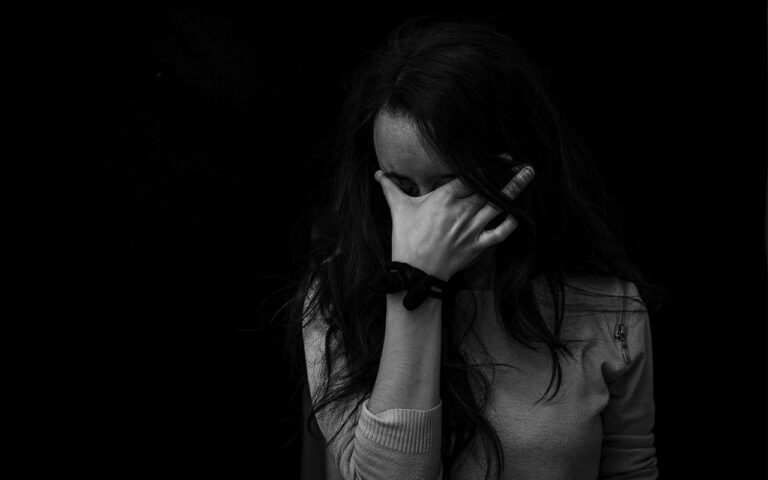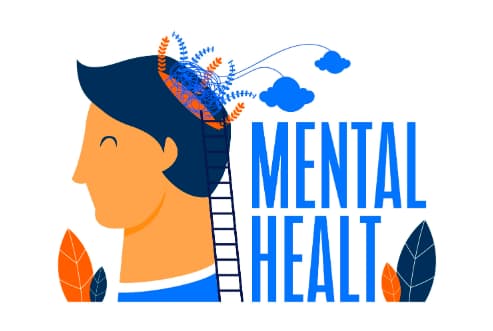Everyone can experience anxiety and excitement from time to time, such as when nervous about a job interview or a first date, but, sometimes, this anxiety doesn’t go away, which can indicate the presence of an anxiety disorder. According to the National Institute of Mental Health, there are several different types of anxiety disorders, including generalized anxiety disorder, panic disorder and phobia-related anxiety disorders and they all depend on one important aspect, where an oppressive feeling of worry or fear interferes with a person’s daily life. Researchers believe that anxiety disorders can be caused by both genetic and environmental factors and these anxiety disorders are usually treated with various interventions including psychotherapy, medications and a combination of both. Although anxiety disorders are sometimes quite difficult to identify, there are certain signs and symptoms that are characteristic of people with most types of anxiety disorders. Therefore, it is important to seek professional help if the following conditions are present:
Excessive anxiety
Again, worrying from time to time is normal, but in people with generalized anxiety disorder, these worries don’t go away. People with this disorder worry about typical things, including health, money, or family problems, but on a larger scale. They continue to worry about these things even when there is no obvious reason to worry. This anxiety is often difficult to control and sufferers find it hard to focus on their daily tasks.
Sleep problems
Adults typically need between 7 and 9 hours of sleep each night and when sleep schedules are disrupted, it’s a sign that something is wrong. According to the Anxiety and Depression Association of America, stress and anxiety can cause sleep problems, or exacerbate other problems such as difficulty falling asleep. Since sleep disturbances can lead to anxiety or worry, it’s best to talk to your doctor to determine the underlying causes, and what can be done to correct them.
Irrational fears
Anxiety is not generalized; instead, it is tied to a specific situation or subject, such as fear of flying, fear of animals, or fear of crowds. If the fear becomes overwhelming, destructive, and out of proportion to the actual risk, it is a clear sign of an anxiety disorder-type phobia. While phobias can be harmful, they are not always obvious.
Chronic digestive distress
Sometimes anxiety can cause more than a feeling of “butterflies in your stomach.” In fact, digestive problems – nausea, diarrhea, and upset digestion – are the main complaints associated with anxiety disorders. Although there are some steps a person can take to reduce gastrointestinal pain due to anxiety, such as breathing deeply or exercising regularly.
Stage fright
Stage fright is another symptom of anxiety. This kind of anxiety is experienced by many people before being in the spotlight. But if the fear is so severe that no amount of training or practice alleviates it, it may be a form of social anxiety disorder (also known as social phobia). People with social anxiety tend to worry for days or weeks before a certain event or situation.
Self-awareness
Social anxiety disorder doesn’t always involve talking to a crowd or being the center of attention. In most cases, anxiety is triggered by everyday situations, such as having a private conversation at a party or eating or drinking in front of a small number of people. In these situations, people with social anxiety disorder feel shy, feel as if all eyes are on them, blush, shiver, experience nausea, heavy sweating, or difficulty speaking.
Panic attacks
Panic attacks can be terrifying: it is a sudden, gripping feeling of fear and helplessness that can last for several minutes, accompanied by scary physical symptoms such as breathing problems, strong heartbeat, tingling or numbness in the hands, sweating, weakness or dizziness, chest pain, stomach pain, and feelings of hot or cold. These common physical signs are usually due to the body’s response. People with panic disorder live in fear, not realizing when, where or why their next attack might occur. They tend to avoid places where attacks have occurred in the past.
Flashbacks
Reliving an unsettling or traumatic event – an unpleasant encounter, the sudden death of a loved one – is a characteristic symptom of PTSD, which shares some features with anxiety disorders. (Until recently, in fact, PTSD was considered a type of anxiety disorder rather than an independent condition.) But flashbacks can happen with other types of anxiety as well. Some studies, including one in the Journal of Anksioznost, suggest that some people with social anxiety have symptoms similar to PTSD.
Perfectionism
Compulsive thinking, known as perfectionism, “goes hand-in-hand” with anxiety disorders. If a person frequently judges themselves or has a lot of anticipatory concern about mistakes or not meeting their standards, this is indicative of an anxiety disorder. Perfectionism is especially common in obsessive-compulsive disorder, which, like PTSD, has long been considered an anxiety disorder.
Compulsive Behavior
To be diagnosed with obsessive-compulsive disorder, obsessive compulsive and compulsive thoughts – a person must be accompanied by compulsive behavior, whether mental (repeating to themselves that everything will be okay over and over again) or physical (hand washing). Obsessive thinking and compulsive behavior becomes a full-blown disorder when the need to complete “rituals” arises and it begins to rule his life.
Insecurity
Constant insecurity and self-doubt is a common feature of anxiety disorders, including generalized anxiety disorder and obsessive-compulsive disorder. In some cases, the doubts may revolve around an issue that is pivotal to a person’s personality or relationships. In obsessive-compulsive disorder, these “bouts of doubt” are especially common when there is no answer to the question.







